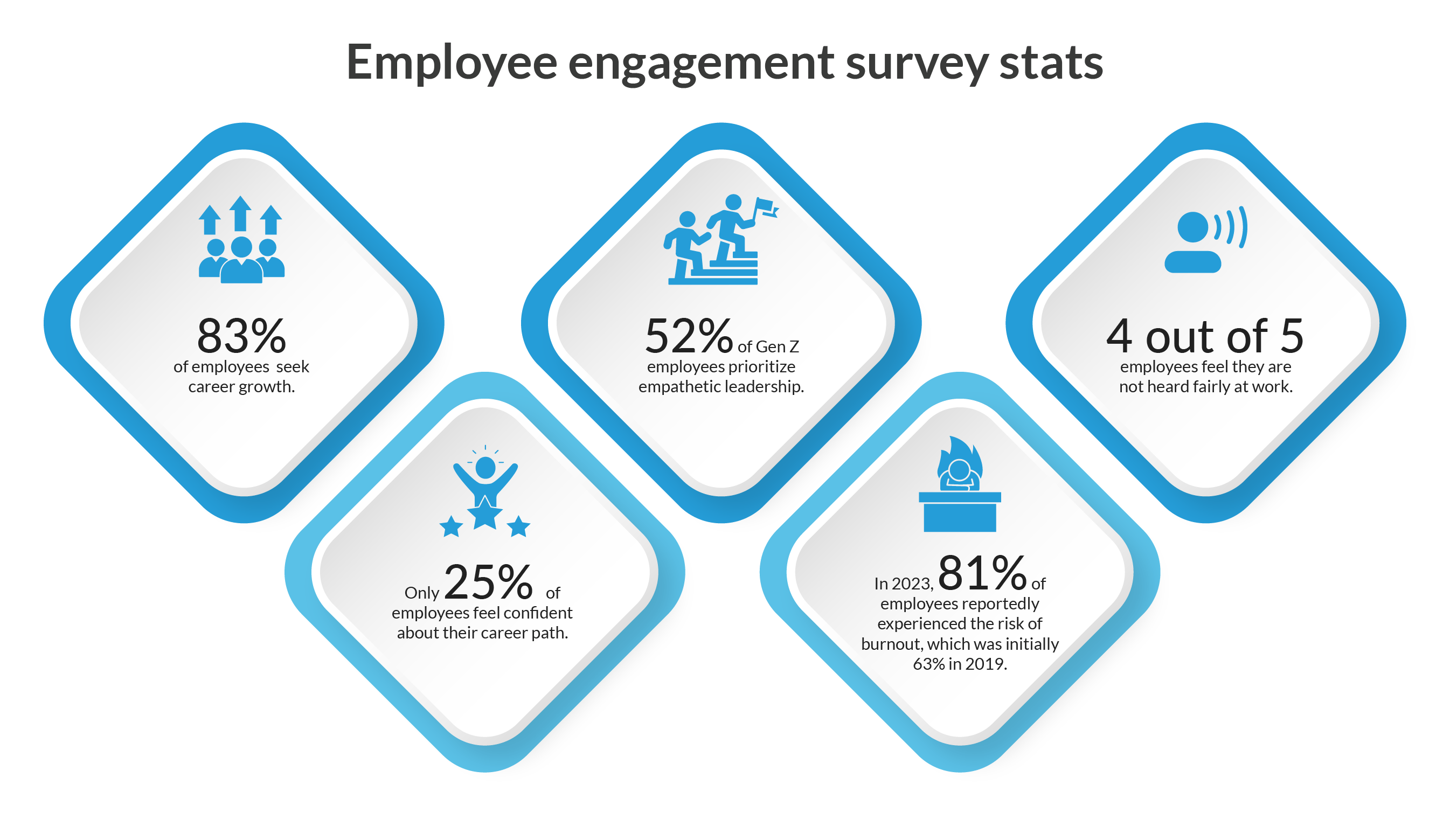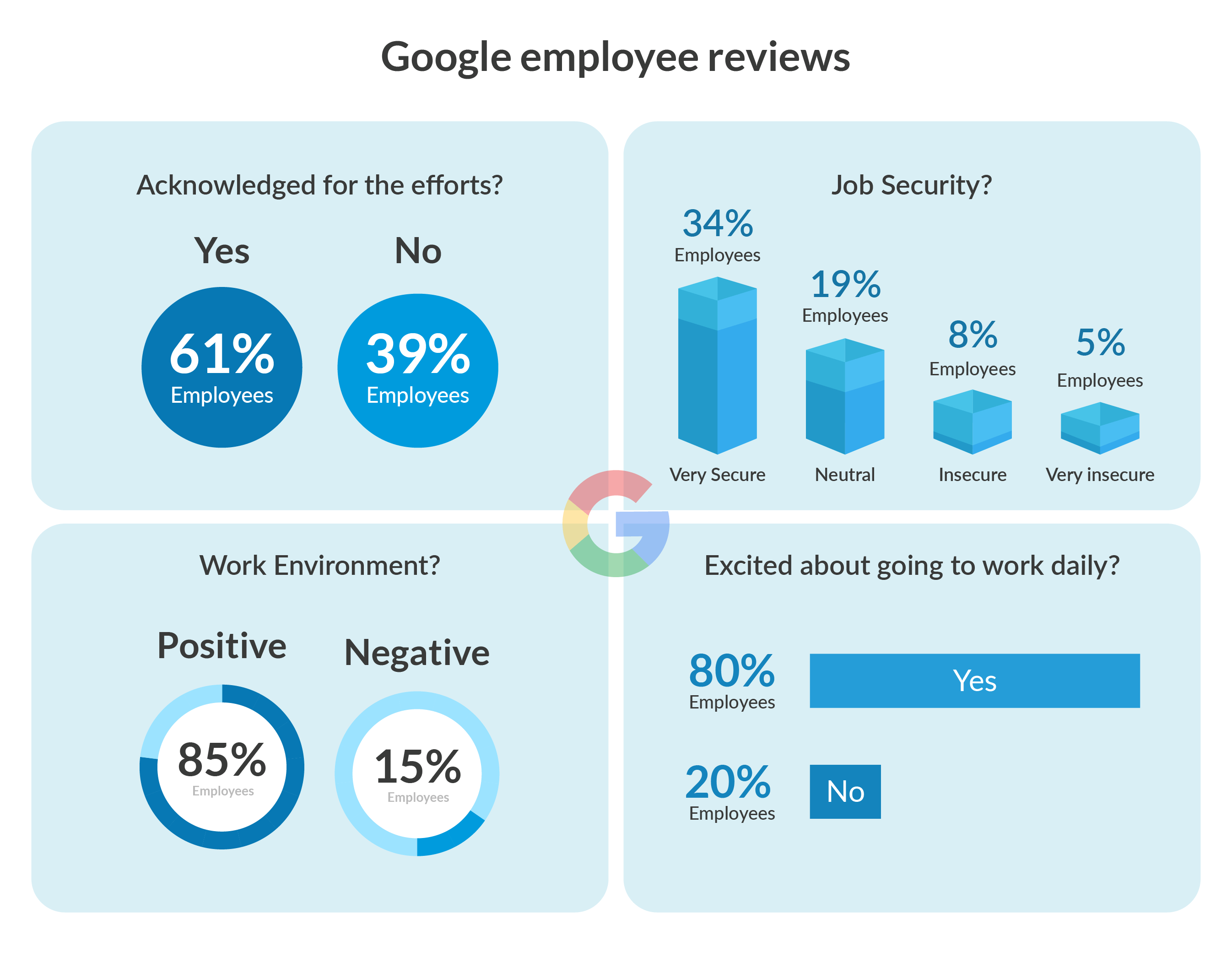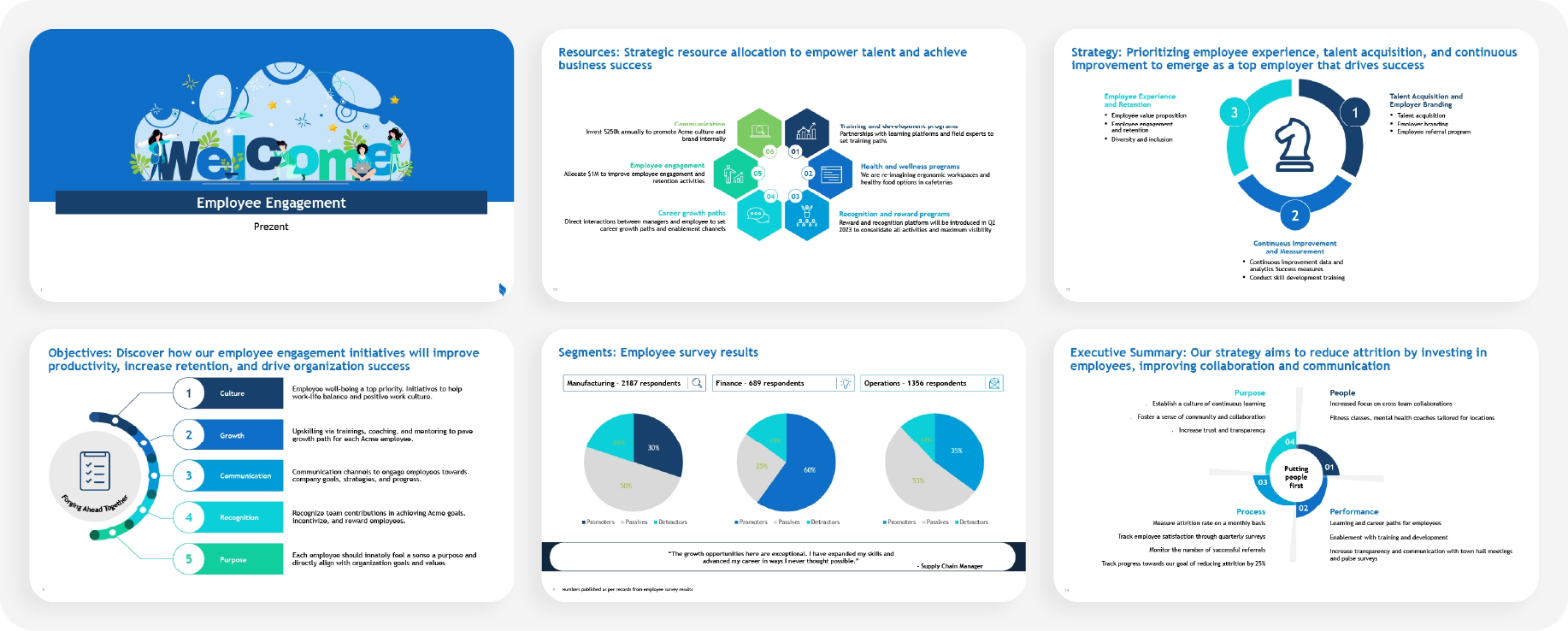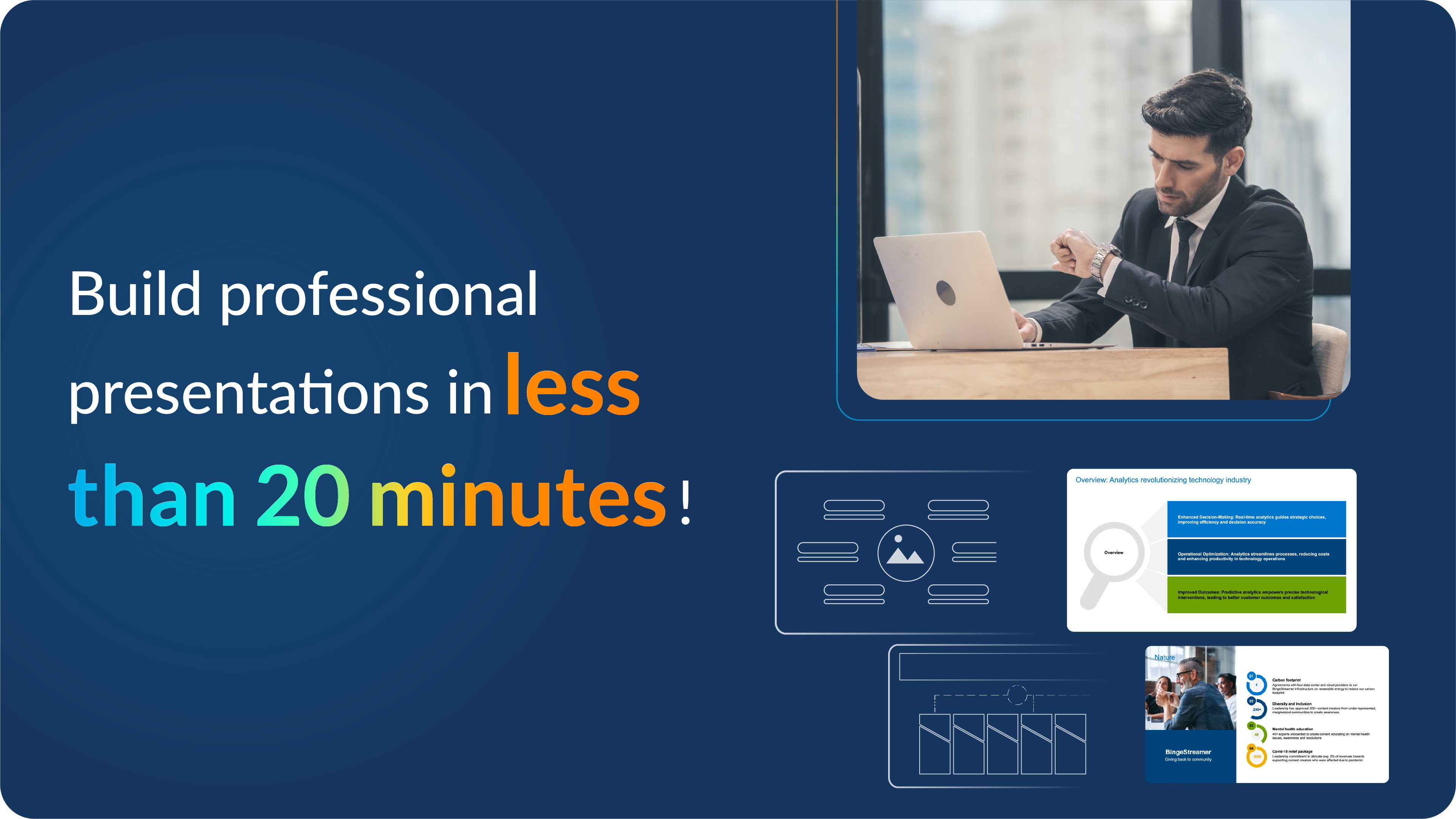Employee engagement: How to communicate and engage in a remote workplace

Employee engagement is consistently a top concern for HR leaders. It impacts employee performance and influences an organization's revenue, growth, and overall success. The challenge has become even more complex with the initiation of remote and hybrid working models due to COVID-19.
This article explores employee engagement by focusing on how to communicate effectively with employees at varying levels of engagement. We will discuss the importance of employee engagement and look into some best practices to promote a positive work environment, even in a remote work setting. The aim is not only to boost employee productivity and retention but also to ensure the better mental health of your team.
What is employee engagement?
Employee engagement is a relevant metric for HR managers to analyze the motivation, enthusiasm, and dedication of the workforce towards their work. It shows the emotional and psychological connection employees have with the organization. Engaged employees exhibit a positive attitude, greater involvement, and higher productivity. This helps the employees grow professionally and also drives the overall success of the company.
Why is employee engagement important?
Gallup conducted an important survey to understand how employee engagement is related to performance. The study revealed some interesting data points in addition to establishing the correlation between engaged employees and key performance outcomes.
- 81% lower absenteeism
- 43% lower turnover in low-turnover organizations
- 23% higher profitability
The above data underscores that employee engagement does have a positive impact not only on the performance of the employees but also on the overall welfare of the organization. Let’s go through the potential that you as a leader can reap by working towards higher employee engagement:
- Enhanced performance: Engaged employees are motivated and committed, which leads to higher productivity and better performance. They are more likely to go beyond their job requirements and contribute to the overall organization's success.
- Improved retention: Organizations that invest more in the engagement of the employees have seen lower turnover rates compared to the ones who do not work towards higher employee engagement. Engaged employees are less likely to seek other job opportunities, reducing the costs associated with recruitment and training.
- Increased customer satisfaction: Engaged employees provide better service and create a positive experience for customers leading to increased customer loyalty and positive word-of-mouth. This, in turn, benefits the company's reputation and growth.
- Higher profitability: Improved customer loyalty, higher retention and improved performance translates to higher company profitability. Organizations with high levels of employee engagement often see improved financial performance.
- Better team collaboration: Engaged employees are more likely to collaborate effectively with their colleagues. This helps to develop a positive work environment and enhances teamwork, leading to better problem-solving and innovation.
- Enhanced well-being: Engaged employees generally experience higher levels of job satisfaction and better mental health, creating a more positive and supportive workplace culture.
What drives employee engagement at the workplace?
Employee engagement is influenced by multiple factors that directly relate to how employees feel about their work, their work environment, and the organization. Let us look into these factors closely:
Leadership and management:
Employees are influenced by the leadership and management, which forms their behavior towards the organization. There are three factors that establish the connection between the employee and the company:
- Leadership quality: Effective leaders provide vision, support, and feedback, creating a culture of engagement.
- Employee well-being: Focusing on physical, mental, and emotional health ensures employees remain engaged.
- Connection to the company's mission: Employees are more engaged when they feel their work contributes to the organization’s goals.
Work environment and culture
The day-to-day experience of employees is shaped by the work environment and the organizational culture. Three factors that influence this experience include factors like:
- Work environment: A positive, inclusive, and collaborative culture enhances employee involvement and satisfaction.
- Supportive management: Managers who offer guidance and regular feedback develop trust and engagement.
- Recognition and rewards: Valuing employee efforts through recognition boosts motivation and engagement.
Personal and professional growth
Employee is concerned with both their personal and professional lives, which influence their emotional state as well as the quality of work. The factors to pay attention to in this category are:
- Job clarity: Clear roles and expectations ensure employees understand their responsibilities and goals.
- Autonomy: Empowering employees to make decisions and manage tasks independently increases engagement.
- Work-life balance: Maintaining a healthy balance prevents burnout and sustains engagement.
- Career development opportunities: Offering growth and advancement opportunities keeps employees motivated.
What are the levels of employee engagement?
There is not one size that will fit all when it comes to people. The whole workforce of any organization will have people with varied engagement levels. There are four major levels where the employees can be categorized namely:
- Highly engaged- These actively engaged employees are motivated to give their best at work and are constantly learning to set higher targets.
- Moderately engaged- These are satisfied employees who achieve their targets and do what they are asked to do.
- Less engaged- This group of employees have mixed feelings about the workplace and their role. They are mostly indifferent to their work environment. While they do their assigned tasks, they do the bare minimum to get by.
- Disengaged- Disengaged employees have negative sentiments towards their organization and goals. They are disconnected from the team and have a high probability of quitting their jobs.
Employee engagement survey report:
Just categorizing people based on the level of engagement will not give us the complete picture of the problem we are discussing here. Many esteemed organizations have conducted various surveys to understand the state of employee engagement. These survey reports have provided us with some valuable information to address the employee engagement issue.
- 83% of employees seek career growth
- Only 25% of employees feel confident about their career path
- 52% of Gen Z employees prioritize empathetic leadership
- In 2023, 81% of employees reportedly experienced the risk of burnout, which was initially 63% in 2019.
- 4 out of 5 employees feel they are not heard fairly at work.

Communicate effectively with different employee categories: Employee engagement strategies-
Since different employees are at different stages of engagement, you will have to use personalized communication and strategies to help them relate and follow easily. Below are employee engagement strategies to effectively engage employees in each category:
Highly engaged employees:
- Career advancement: Given that 83% of people prioritize career growth, communicate clear, transparent career paths and succession plans to these employees. Reinforce their potential and work closely with them to map out growth opportunities.
- Personalized development: Initiate one-on-one conversations to identify skills they want to develop and design customized development plans with their input.
- Recognition and feedback: While highly engaged employees are self-driven, they still value recognition. Provide timely, constructive feedback and celebrate their contributions, reinforcing their drive to excel.
Below is an example of a rewards and recognition presentation template to assist you in quickly communicating impactful rewards and recognition programs to motivate employees and reinforce a positive work culture.
.png)
Moderately engaged employees:
- Clarify career paths: Since only around 25% of employees feel confident about their career progression. Communicate clear and transparent pathways for advancement to motivate these employees to reach for more.
- Reskilling opportunities: Work directly with them to develop reskilling strategies and explore growth areas that align with their interests and organizational needs. This will help move them from moderate to high engagement.
- Empathy in leadership: With 52% of Gen Z employees placing higher importance on empathetic leadership post-pandemic, ensure managers are trained in soft skills like empathy, making moderate employees feel valued and supported.
Training and development presentations need to be clear and logically structured to ensure proper understanding, knowledge retention, and alignment of the team's skills with the overall organizational goals. Below is a well-structured training and development (T&D) presentation template to help you deliver key concepts effectively and engage your audience.
%252520presentation%252520template%252520(1).png)
Less engaged employees:
- Understand their needs: Engage in open conversations to understand better your employees' concerns, goals, and development needs. Ensure that they feel heard at work.
- Offer tailored support: Employees in this category may benefit from more individualized attention. Help them identify the skills they need and create personalized development plans to reignite their interest in their work.
- Address burnout risk: With 81% of employees at risk of burnout, it is important to support work-life balance initiatives. Provide flexibility and offer well-being programs to ensure they stay engaged.
Disengaged employees:
- One-on-one coaching: Regularly conduct one-on-one meetings with these employees to understand their frustrations and disconnect. Empathy-driven conversations can provide insights into why they feel disengaged.
- Reignite their purpose: Help them reconnect to the company's mission and show how their role contributes to the larger goals. When employees understand the impact of their work, it can help reignite a sense of purpose.
- Offer growth opportunities: Many disengaged employees lack clear growth paths. Work with them to design a reskilling plan and communicate any available opportunities for career advancement.
- Soft skills training for managers: Empathetic leadership can effectively re-engage disengaged employees. Train managers in soft skills and focus on building trust by taking a more empathetic approach.
Soft skill training for managers equips them to communicate effectively, resolve conflicts, and build strong relationships within their teams. Skills like emotional intelligence, adaptability, and leadership help managers create a positive work environment, boost team productivity, and improve employee retention. The soft skills training presentation templates below can guide you in crafting a well-structured presentation, which is essential for effectively delivering soft skills knowledge and techniques.

Employee experience success story: Google
Google's approach to employee engagement is a successful case study. This company has been recognized on Fortune's list of "Best Companies to Work For" and claims an impressive Glassdoor rating of 4.4, based on over 6,000 employee reviews.
Let us look at some interesting reviews:

So, what makes Google a leader in employee engagement and satisfaction?
Google emphasizes a combination of flexibility, employee well-being, creativity, and a supportive culture. Its strategies help maintain high levels of employee engagement, creativity, and productivity, positioning the company as a leader in employee satisfaction and retention.
- Flexibility and creativity: Google employees are allowed to spend 20% of their time on projects they are passionate about. This helps boost employee motivation and prevent burnout. This level of autonomy encourages innovation and makes employees feel trusted and valued.
- Employee well-being: Google provides extensive benefits, including free meals, gym memberships, on-site healthcare, and even nap pods. This approach of Google ensures that employees are not only productive but also mentally and physically supported.
- Career development: Google has a structured career development program through initiatives like CareerGuru, which offers mentoring and coaching from company leaders. This helps employees grow within the company and aligns their career aspirations with organizational goals.
- Fostering collaboration: Google promotes a community atmosphere with programs like "Googler to Googler," which facilitates peer learning and skill development. They also provide collaborative workspaces to encourage interaction and idea-sharing.
- Positive leadership: Google’s leadership emphasizes open communication and trust, empowering employees to express ideas freely and contribute to meaningful projects.
Employee engagement best practices for HR:
Think of employee engagement this way: No one can spend 8-9 hours a day feeling unhappy about their work or workplace. Therefore, what can you do to make the workplace positive and productive?
Below are a few best practices that can help HR professionals and leaders promote a positive work culture and increase employee engagement, even in a remote work setup:
- Effective leadership training:
Leaders are the drivers of change and serve as a key source of an organization's culture. They are the catalysts for change, and their influence ultimately shapes team dynamics and the overall work culture. To inspire positive change, leaders must be equipped with the right skills to effectively manage and motivate their teams. Training in empathy, active listening, and other key soft skills is essential for managers to build strong, supportive connections with their teams and create a culture of engagement and growth throughout the organization.
- Holistic employee well-being program:
Happy and engaged employees have proved to contribute to 21% higher profitability. This underscores the importance of investing in a holistic employee well-being program. Develop a work culture that supports your employees' physical and mental health through wellness programs, flexible schedules, and a focus on work-life balance.
- Constructive feedback mechanism:
Active employee engagement is a two-way process, and feedback plays a crucial role in making it effective. It’s important to listen to your employees and measure employee engagement initiatives. Establish a system where employees can voice concerns and ensure these are addressed promptly. Additionally, constructive feedback should be provided to help employees refine their skills and improve performance, encouraging growth and productivity in the workplace.
- Growth, recognition, and learning opportunities:
Learning should be an ongoing process that equips employees with new skills and helps them refine their existing skills. This keeps employees engaged and drives them to perform at their best. Offer growth opportunities to highly skilled and motivated employees, encouraging others to strive for excellence.
Additionally, regularly recognize and celebrate employees' achievements and contributions. Implementing recognition programs and reward systems helps maintain high motivation levels and ensures employees feel valued and appreciated.
- Encourage autonomy:
Empower employees by allowing them to make decisions and take ownership of their work. This alleviates managers and leaders from micromanagement, fosters trust, and drives greater engagement. Autonomy encourages employees to take responsibility and accountability for their tasks, ultimately leading to higher performance and a more motivated workforce.
FAQ's-
1. What are some effective employee engagement ideas for a remote workplace?
Implementing creative engagement ideas can help maintain strong connections in a remote work setting. Virtual team-building activities, personalized recognition programs, and well-being initiatives are powerful ways to improve employee engagement. Offering flexible working hours, encouraging regular check-ins, and promoting peer-to-peer recognition are other strategies that help every employee feel valued and connected, even when working remotely.
2. How can employee engagement software contribute to engagement and retention?
Employee engagement software provides a centralized platform for tracking engagement levels, gathering employee feedback, and recognizing achievements. These tools streamline communication, support employee listening, and offer actionable insights into the drivers of engagement. By addressing employee concerns and promoting personalized engagement efforts, organizations can boost both engagement and retention, reducing turnover rates.
3. What role does employee feedback play in improving workplace engagement?
Employee feedback is crucial for understanding the factors that drive engagement and for identifying areas of improvement. Regularly collecting and acting on feedback, through employee engagement survey questions, fosters a culture of trust and transparency. This feedback loop helps refine engagement programs and provides employees with a sense of ownership, positively impacting overall workplace engagement.
4. How do employee engagement programs impact overall company success?
Employee engagement programs designed to enhance workplace engagement can significantly contribute to company success. Engaged employees are more productive, exhibit higher morale, and are more likely to contribute to innovative solutions. These programs, whether focused on recognition, career development, or well-being, create a positive environment that drives both individual growth and organizational performance, ensuring long-term success.
5. How can organizations measure engagement effectively in a remote work setup?
To measure engagement effectively, organizations can leverage employee engagement platforms that include tools for tracking key metrics such as participation rates, employee feedback, and performance data. Conducting regular employee engagement surveys and monitoring employee engagement trends also help gauge engagement levels. These insights provide a clear understanding of where improvements are needed and ensure that engagement efforts remain aligned with company goals.
How Prezent help you improve employee engagement?
Prezent can significantly enhance employee engagement by streamlining communication and empowering teams with the right tools for effective collaboration. Here’s how:
1. Clear communication: Prezent simplifies the creation of clear, impactful presentations, ensuring that goals, expectations, and updates are communicated effectively. The story builder feature enables you to engage the audience in a compelling way, ensuring clarity and transparency, which fosters stronger connections and better alignment within teams.
2. Consistent recognition: With Prezent, managers can easily design presentations to recognize and celebrate employee achievements, boosting morale and motivation. Recognition through professional, visually engaging presentations helps employees feel valued and appreciated.
3. Skill development: Prezent’s user-friendly platform enables employees to improve their presentation and communication skills continuously. This promotes growth and encourages employees to take ownership of their work, enhancing both individual performance and team productivity.
4. Time-saving tools: Prezent automates much of the presentation creation process, saving valuable time for both leaders and employees. Prezent’s professionally designed templates, like the employee engagement template shared below, help you create compelling, well-structured presentations. This promotes autonomy and engagement by reducing stress and workload.

5. Improved collaboration: Prezent’s platform enables seamless collaboration across teams, making it easier to share ideas, provide feedback, and co-create content. This enhances teamwork, strengthens relationships, and drives better overall engagement.
Prezent's AI is transforming the presentation space by enhancing teams' efficiency and effectiveness. It reduces significant time spent creating presentations and enables professionals to invest that time in their real tasks.
Know more about Prezent's capabilities and tools by scheduling a demo or using your free trial to explore the platform at your convenience.


.avif)









